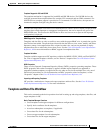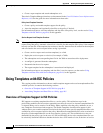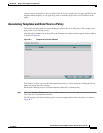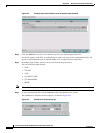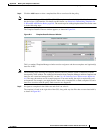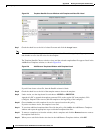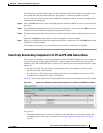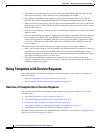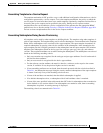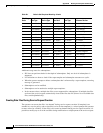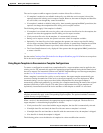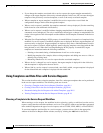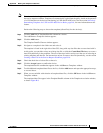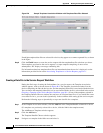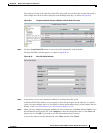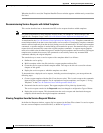
B-11
Cisco IP Solution Center L2VPN and Carrier Ethernet User Guide, 6.0
OL-21636-01
Appendix B Working with Templates and Data Files
Using Templates with Service Requests
Associating Templates to a Service Request
The template mechanism in ISC provides a way to add additional configuration information to a device
configuration generated by a service request. To use the template mechanism, the policy on which the
service request is based must have been set to enable templates. Optionally, templates and data files to
be used by the service request can be specified in the policy. During service request creation,
templates/data files can be added to a device configuration if the operator has the appropriate RBAC
permission to do so. See the section
Choosing a Template in the Service Request Workflow, page B-14
for how to choose templates/data files in the service request workflow.
Associating Subtemplates During Service Provisioning
All templates can be used by other templates as building blocks. The template using other templates is
called a super template. The template being used is called a subtemplate. A new attribute in the Template
Editor allows subtemplates to be associated with a super template. The super template instantiates all
required subtemplates by passing values for the variables in the subtemplate. After instantiation, the
super template puts the configlets generated for the subtemplate into the super template. ISC branches
templates into subtemplates based on device type, line card type, port type, role type, and software
versions. These optional attributes are set while creating the subtemplates. The subtemplates are selected
based on the following matching criteria:
• Only exact matches are recognized for the card type and port type attributes. No wild card match is
allowed for these attributes.
• Only an exact match is recognized for the device type attribute.
• For the software version attribute, the match is done for a software version equal to the current
version, if available. If not, the previous highest version is matched.
• If exact matching attributes are not found, then the match proceeds with the criteria described in
Table B-1. An information message listing the exactly matched subtemplates of the super-template
is shown if and only if any of the matching criteria are met.
• If none of the attributes are matched, then the default subtemplate is applied.
• If no default subtemplate exists, a subtemplate with all null attribute values is matched.
• If none of the rows specified in the table match, then ISC looks for subtemplates that are marked as
device default, or else version default. If no subtemplates are marked as such, then no matching
subtemplates are picked. A warning message is displayed.
The matching criteria are summarized in Table B-1.



